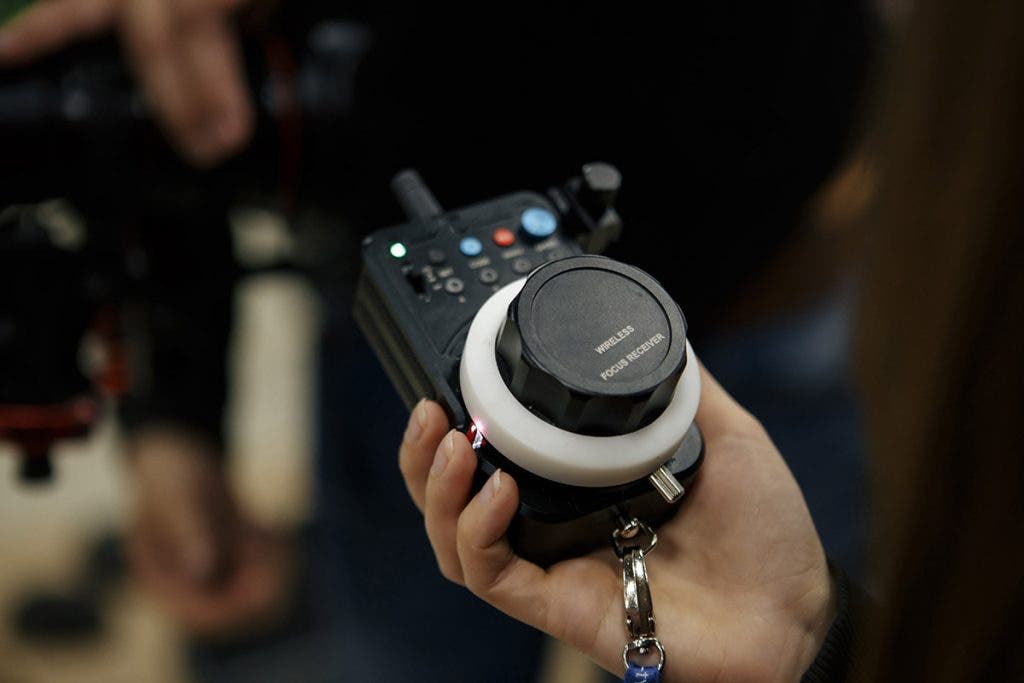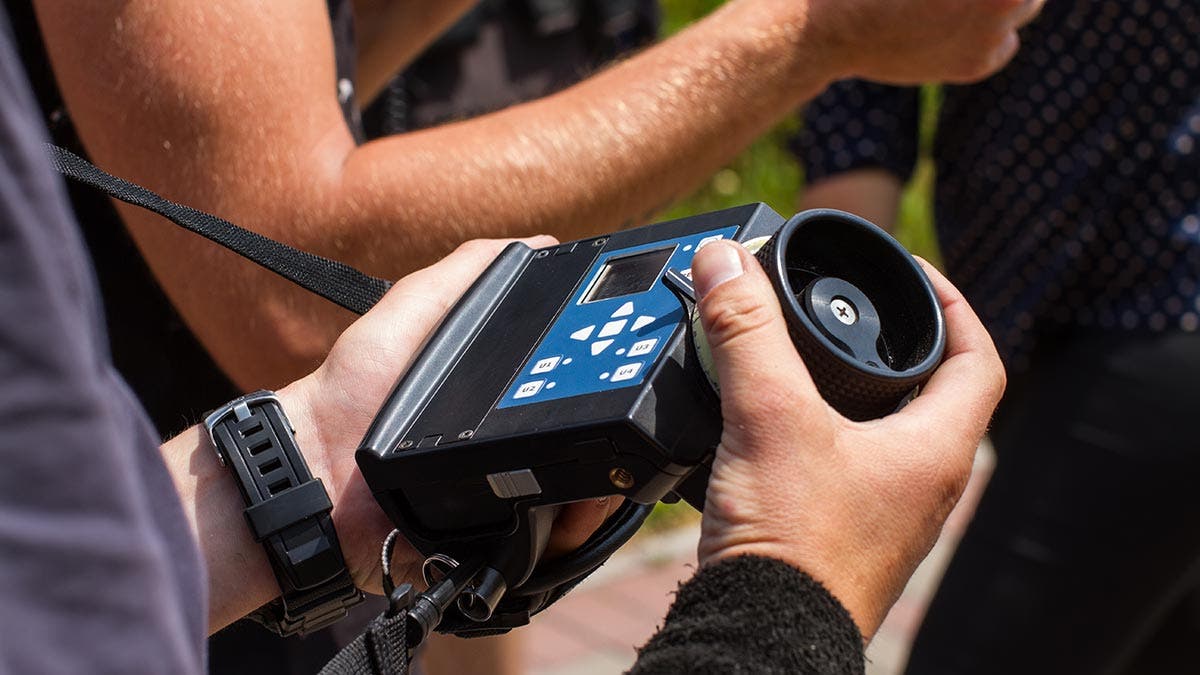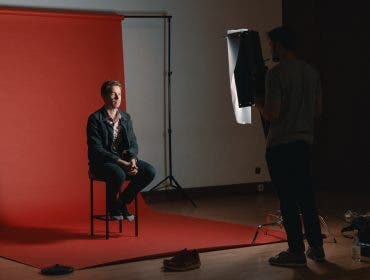Follow-focus systems are common pieces of filmmaking equipment that improve a camera operator’s focus control. These control systems are made up of many different components that work together to make smooth focusing possible.

What Is a Follow-Focus System?
A follow-focus system is a complex mechanical system that attaches to cinema camera lenses or DSLR lenses for improved focusing. Using a follow-focus system, you can keep your shot in focus as you follow along with the action, and achieve better zoom control than with your lens’s unaided focus ring.
Why Do You Need a Follow-Focus System?

Follow-focus systems are valuable for a few key reasons. They help you create higher-quality videography, shoot with a shallower depth of field, and achieve trickier shots with less work and frustration.
Improved Videography
Autofocusing systems are better suited to still photography than videography. Even if you’re using a high-end Canon, Sony, or Nikon DSLR or a top of the line ARRI cinema camera, manual focusing is more precise and predictable than autofocusing.
Shooting With a Shallow Depth of Field
Many cinematographers prefer shooting at wider apertures for a shallower depth of field. Wide apertures have a very narrow tolerance range for sharp focus, so if you plan to shoot with a wide aperture, a follow-focus system will help you achieve tack-sharp focus for every shot.
Smoother Workflow
Manual focusing also requires time and precision. If you’re trying to keep up with a rigid filming schedule, follow-focus systems will help you achieve tricky shots, maintain precise focus, and shift focus from one subject to another.
Whether you’re working on a small independent film with basic gear or a larger Hollywood production with high end equipment, using a focus system will improve the look of your footage and save precious time.

Parts of a Follow-Focus System
Most follow-focus systems function similarly, with a common collection of components. Here’s what you’ll find in most systems.
Rods and Baseplate
Two parallel rods create the foundation of most camera rigs. 15mm rods are the most common size, but 19mm rods are also available. The rods act as a rigid frame that connects to a baseplate to physically support your camera and important accessories.
Rod Clamp or Rod Mount
Rod clamps attach to the 15mm rods to add rigidity and a secure connection between the camera body and the follow-focus system. Most rod clamps are adjustable for an improved fit and better control.
Arm
The arm connects the rod clamp to the control system’s focus gear. Some arms are rigid and some are flexible for improved adjustability with different lenses.
Focus Gear
The focus gear acts as the connection point between a control knob, which the camera operator maneuvers, and the lens-gear ring, which connects to the lens itself. Focus gears are the most important part of a follow-focus rig. They contain tiny, evenly spaced teeth that interlock with other components to achieve focus pulls and other techniques.
Focus gears come in a variety of sizes and configurations to help you get the exact look you want.
Lens-Gear Ring
The lens-gear ring attaches to the focusing ring on your camera lens. It’s a gear belt that features a collection of evenly spaced teeth that mesh with the teeth on the system’s gear to initiate smooth rotation for focusing.
Lens-gear rings are size adjustable but you may need several gear rings to accommodate your various camera lenses. Some cine lenses have built in gear teeth so you won’t need a lens-gear ring.
Focus Knob
The focus knob is the handwheel portion of the focus control system that the camera operator manually rotates to adjust focus.
White Disk
The white disk or marking disk is an important aspect of any control system. You can draw focus marks with a dry-erase marker in specific locations on the white disk so when the camera is rolling, you’ll know just how far to rotate the focus knob for sharp focus.
Shopping for a Follow-Focus system
As with any type of videography gear, follow-focus systems come with a large range of features and accessories in a variety of price points. Regardless of your budget, the best control systems will offer the rigidity of a solid build, helpful adjustment capabilities, and the opportunity to expand with other accessories and parts as needed. As you shop for a follow-focus unit, pay close attention to compatible gear, weight and size ratings, and customer reviews.
Feature image via Shutterstock






